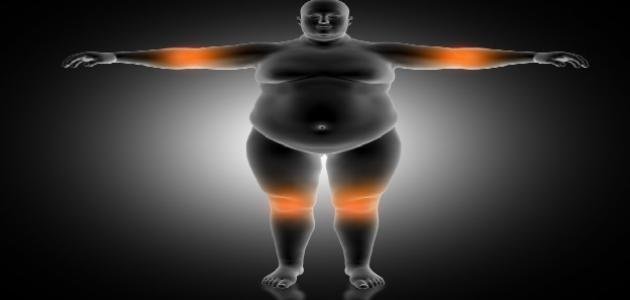دراسة حديثة: السمنة تضاعف خطر الإصابة بأمراض العظام
New study: Obesity doubles the risk of bone disease

يسر مركز الشرف التخصصي للعظام والعمود الفقري أن يقدم لزوار موقعنا الكرام، تقارير حول أحدث الدراسات والأبحاث الطبية في مجال طب العظام، متمنين للجميع الاستفادة من هذه المعلومات.
Al Sharaf Orthopedic and Spine Center is pleased to present to our valued visitors reports on the latest medical studies and research in the field of orthopedics, wishing everyone benefit from this information.
*************
تؤثر السمنة على رعاية المرضى الفردية ونظام الرعاية الصحية وتقريبًا كل عضو في الجسم، وغالبًا ما يعاني الأشخاص المصابون بالسمنة من مشاكل صحية أخرى، بما في ذلك مرض السكري وأمراض القلب وبعض الأورام والسرطانات والاضطرابات النفسية، ومع ذلك ، فإن دور السمنة في حالات جراحة العظام وعلاجها لا يحظى بالدعاية الكافية.
نقلًا عن الأكاديمية الأميركية لجراحي العظام، ووفقًا لجراح العظام ويليام م. يقترح هو وزملاؤه مؤلفو “السمنة وجراحة العظام والنتائج”، فإنه على الرغم من أن المرضى الذين يعانون من السمنة يواجهون معدلات مضاعفات جراحية أعلى، يمكن أن تساعد إجراءات تقويم العظام في تقليل الألم وتحسين وظيفة العظام والمفاصل.
آلام الوزن الزائد: السمنة عامل خطر مستقل قوي للألم. كان المراهقون المصابون بالسمنة أكثر عرضة للإبلاغ عن آلام العضلات والعظام ، بما في ذلك الألم الموضعي المزمن ، مقارنة بأقرانهم ذوي الوزن الطبيعي. يضاعف المرض تقريبًا خطر الألم المزمن بين كبار السن – مما يسبب ألمًا في هياكل الأنسجة الرخوة مثل الأوتار والأربطة، وتفاقم الحالات مثل الألم العضلي الليفي لدى الأفراد الذين يعانون بالفعل من آلام مستمرة في العضلات والمفاصل.
السمنة وهشاشة العظام: هشاشة العظام “تآكل وتمزق” تدريجي للمفاصل – كثيرا ما يرتبط بالسمنة، يضع كل رطل من وزن الجسم من أربعة إلى ستة أرطال من الضغط على كل مفصل ركبة، تشير الأبحاث إلى أن الوزن الزائد يزيد الضغط ، أو الحمل الميكانيكي الحيوي، على الركبتين ويزيد من احتمال تآكل السطح المبطّن لمفصل الركبة، مما يؤدي إلى تطور الزراعة العضوية والحاجة إلى تقويم مفصل الركبة بالكامل.
وتشير التقديرات إلى أن الحاجة إلى التقويم بما لا يقل عن 8.5 مرة بين المرضى الذين لديهم مؤشر كتلة جسم أكبر من أو يساوي 30 ، مقارنة بالمرضى الذين لديهم مؤشر كتلة الجسم ضمن النطاق الطبيعي من 18.5 إلى 24.9.
السمنة والإصابة: بالإضافة إلى زيادة احتمالية تآكل المفاصل، يؤثر الوزن الزائد أيضًا على حالة الإصابة.. إن احتمالات استمرار إصابات العضلات والعظام أعلى بنسبة 15 في المائة للأشخاص الذين يعانون من زيادة الوزن و 48 في المائة للأشخاص الذين يعانون من السمنة ، مقارنة بالأشخاص ذوي الوزن الطبيعي.

Obesity affects individual patient care, the healthcare system and nearly every organ in the body. People with obesity often have other health problems, including diabetes, heart disease, certain tumors and cancers, and psychiatric disorders. However, the role of obesity in orthopaedic conditions and their treatment is less well-publicized.
According to orthopaedic surgeon William M. Mihalko, MD, PhD, of Campbell Clinic Orthopaedics in Memphis, Tenn., “obesity can accompany a multitude of comorbidities that can have a significant impact on a patient’s outcome from elective orthopaedic surgery.” He and his co-authors of “Obesity, Orthopaedics, and Outcomes,” a study published in the November issue of the Journal of the American Academy of Orthopaedic Surgeons (JAAOS), suggest that even though patients with obesity face higher surgical complication rates, orthopaedic procedures can help minimize pain and improve bone and joint function.
The pains of excess weight: Obesity is a strong independent risk factor for pain. Adolescents with obesity were more likely to report musculoskeletal pain, including chronic regional pain, than their normal-weight peers. The disease nearly doubles the risk of chronic pain among the elderly — causing pain in soft-tissue structures such as tendons and ligaments, and worsening conditions such as fibromyalgia in individuals already living with constant pain in their muscles and joints.
Obesity and osteoarthritis: Osteoarthritis (OA) — a progressive “wear and tear” disease of the joints — is frequently associated with obesity. Every pound of body weight places four to six pounds of pressure on each knee joint. Research suggests that excess weight increases pressure, or the biomechanical load, on the knees and increases the likelihood of wearing away the cushioning surface of the knee joint, resulting in the development of OA and the need for total knee arthroplasty (TKA). The need for a TKA is estimated to be at least 8.5 times higher among patients with a body mass index (BMI) greater than or equal to 30, compared with patients who have a BMI within the normal range of 18.5 to 24.9.
Obesity and injury: In addition to the increased likelihood of wear and tear on joints, excess weight also affects injury status. The odds of sustaining musculoskeletal injuries is 15 percent higher for persons who are overweight and 48 percent higher for people who are obese, compared to persons of normal weight.
Source:American Academy of Orthopaedic Surgeons



اترك تعليقاً